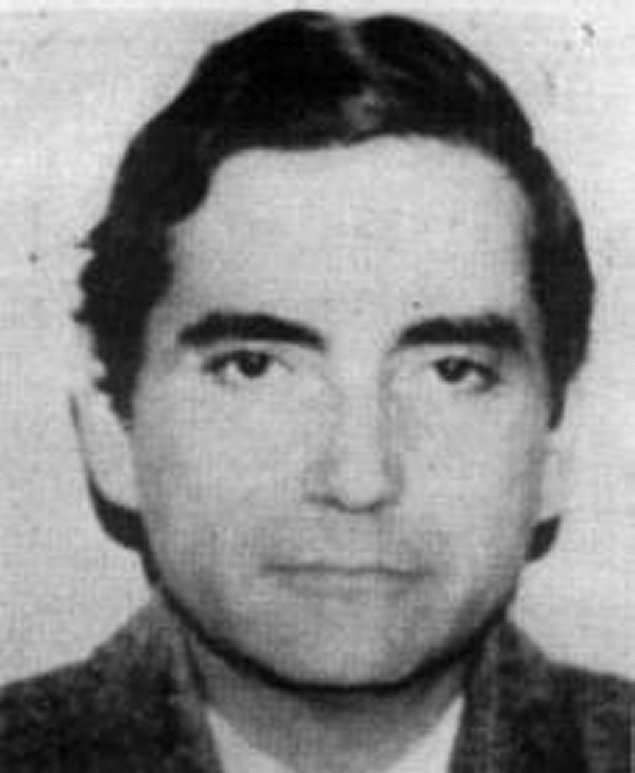A recent declaration by the Institute of Public Health acknowledged Pinochet's possession of chemical weapons and their destruction in 2008. Ingrid Heitmann, former director of the institute, declared that Pinochet had obtained 'enough chemical weapons to eliminate thousands of people in Chile and abroad'.
Human rights lawyer Nelson Caucoto has expounded upon the importance of disclosure, in order for Chileans to comprehend the character of the armed forces, as well as the 'culture of death' operating during Pinochet's dictatorship. The destruction of the weapons, according to Carmen Hertz, may have also served to annihilate proof of the chemicals being used in assassinations. The same concern was echoed by former health minister Alvaro Erazo, who claimed to have no previous knowledge of the weapons' existence. Both Caucoto and Hertz have called for further investigations, with Caucoto stating that Chileans have the right to learn about the 'culture of death' still heavily protected in Chile by the military. As in the case of Victor Jara's murder, Caucoto reiterated the lack of cooperation exhibited by the Chilean Armed Forces, who continue to withhold information which, if declassified, would shed light upon the multitude of atrocities committed by the dictatorship.
Previous reports and research indicate that the manufacture of such weapons, entrusted to Eugenio Berrios and Michael Townley, was a priority for DINA in relation to el Plan Condor. Human experiments involving sarin gas were carried out on detainees held in Cuartel Simon Bolivar, epitomised by the torture inflicted upon two unidentified Peruvians who were forced to inhale the lethal spray and later administered a cyanide injection by Gladys Calderon. Other experiments were conducted upon detainees held at Colonia Dignidad - a detention centre which also hosted a laboratory used for the production of bio-chemical weapons.
In July 1976, Spanish diplomat, former Unidad Popular advisor and member of CEPAL Carmelo Soria was abducted by DINA agents and his corpse discovered in Canal del Carmen in Santiago. Despite dictatorship reports claiming his death had occurred as a result of a car accident, Soria had been detained in Via Naranja - the same location used by Michael Townley and Eugenio Berrios for their clandestine work, and subjected to sarin gas.
Following the assassination of Orlando Letelier in Washingtom, Eugenio Berrios was helped to flee to Uruguay to avoid testifying regarding his role in el Plan Condor, including the murder of Carmelo Soria. In November 1992, having escaped from the house of Uruguayan Colonel Eduardo Radaelli, Berrios declared to the police that he was being held hostage upon orders from Pinochet. His body was discovered three years later on the beach of el Pinar.
Suspicions have also been raised regarding the deaths of former president Eduardo Frei Montalva and Chilean poet Pablo Neruda, both believed to have been administered a toxic substance while at the Santa Maria Clinic.
Human rights lawyer Nelson Caucoto has expounded upon the importance of disclosure, in order for Chileans to comprehend the character of the armed forces, as well as the 'culture of death' operating during Pinochet's dictatorship. The destruction of the weapons, according to Carmen Hertz, may have also served to annihilate proof of the chemicals being used in assassinations. The same concern was echoed by former health minister Alvaro Erazo, who claimed to have no previous knowledge of the weapons' existence. Both Caucoto and Hertz have called for further investigations, with Caucoto stating that Chileans have the right to learn about the 'culture of death' still heavily protected in Chile by the military. As in the case of Victor Jara's murder, Caucoto reiterated the lack of cooperation exhibited by the Chilean Armed Forces, who continue to withhold information which, if declassified, would shed light upon the multitude of atrocities committed by the dictatorship.
Previous reports and research indicate that the manufacture of such weapons, entrusted to Eugenio Berrios and Michael Townley, was a priority for DINA in relation to el Plan Condor. Human experiments involving sarin gas were carried out on detainees held in Cuartel Simon Bolivar, epitomised by the torture inflicted upon two unidentified Peruvians who were forced to inhale the lethal spray and later administered a cyanide injection by Gladys Calderon. Other experiments were conducted upon detainees held at Colonia Dignidad - a detention centre which also hosted a laboratory used for the production of bio-chemical weapons.
In July 1976, Spanish diplomat, former Unidad Popular advisor and member of CEPAL Carmelo Soria was abducted by DINA agents and his corpse discovered in Canal del Carmen in Santiago. Despite dictatorship reports claiming his death had occurred as a result of a car accident, Soria had been detained in Via Naranja - the same location used by Michael Townley and Eugenio Berrios for their clandestine work, and subjected to sarin gas.
Following the assassination of Orlando Letelier in Washingtom, Eugenio Berrios was helped to flee to Uruguay to avoid testifying regarding his role in el Plan Condor, including the murder of Carmelo Soria. In November 1992, having escaped from the house of Uruguayan Colonel Eduardo Radaelli, Berrios declared to the police that he was being held hostage upon orders from Pinochet. His body was discovered three years later on the beach of el Pinar.
Suspicions have also been raised regarding the deaths of former president Eduardo Frei Montalva and Chilean poet Pablo Neruda, both believed to have been administered a toxic substance while at the Santa Maria Clinic.



